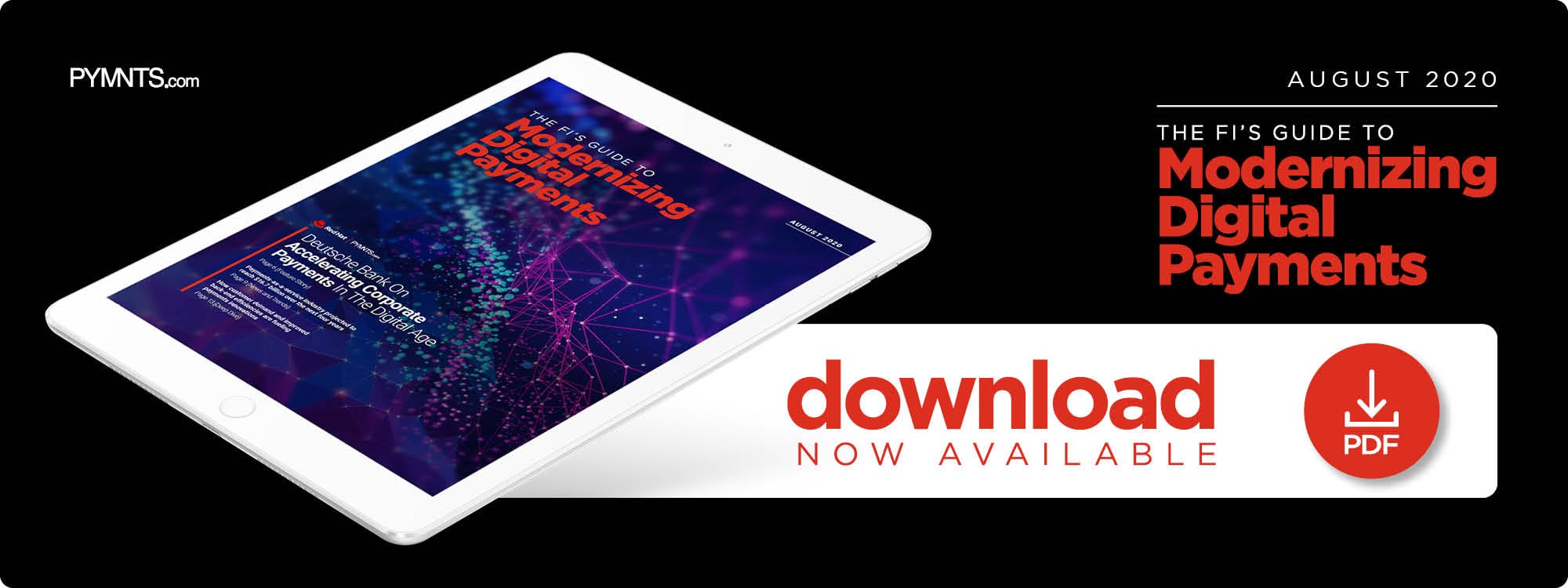Deep Dive: The Pressures Pushing Banks To Modernize Their Payments Infrastructures

A multitude of payments flow between businesses, government agencies, individuals and others in the U.S. The Federal Reserve recently estimated that there were 174.2 billion non-cash payments with a total value of $97.04 trillion in 2018, marking a $10.25 trillion rise from 2015. Credit and debit card payments accounted for 75.3 percent of all non-cash payments made, with debit cards being roughly twice as popular as credit cards.
Financial institutions (FIs) and payment providers are constantly looking to improve and accelerate payments for various reasons. Consumer demand for real-time payments is the most popular, with 77 percent of institutions citing this as a primary factor. Sixty-eight percent cited the need to quickly bring solutions to market and 58 percent said they need to reduce costs or maintain profit levels.
The following Deep Dive explores how each of these factors is driving FIs to embrace fresh, innovative payment solutions as well as the consequences they could face if they do not.
Customers Demand Faster And More Convenient Payments
One main factor driving banks to develop faster and more convenient payments infrastructure is that greater numbers of consumers are demanding it. This is evident in the ways bank customers prefer to receive their salaries, payments from businesses or funds from other transactions. Direct deposit is the most popular among consumers at 47 percent, with PayPal, Venmo and Zelle — all of which take little to no effort from customers to receive payments — collectively accounting for 27 percent. Just 20 percent of consumers prefer paper checks, which require them to wait for their funds to arrive in the mail before depositing them.
Quick and convenient payments are significant loyalty drivers as well. Thirty-nine percent of surveyed respondents said they would be more willing to do additional business with firms that provided direct deposit options, allowing funds to be received within several days. Eight percent would be even more willing if such deposits came through in minutes. Younger customers appear to value speed more than older ones, with 49 percent of 18- to 34-year-olds interested in instant payments compared to 42 percent of those ages 55 and older.
Banks and businesses that do not modernize their payments infrastructure risk losing these customers, with 31 percent of consumers saying they are less likely to patronize firms that make payments only via paper check. Seventy-one percent of consumers desire electronic payments, showing that paperless options are vastly preferred. Businesses are struggling to meet this demand, however, with nearly half of the $1.9 billion in annual business-to-consumer (B2C) transactions still conducted by check.
Banks and businesses must look toward electronic payments if they wish to retain this significant share of customers, and they face additional pressures to accelerate their speed to market and to reduce costs.
Boosting Speed To Market
Developing new programs and innovations can be a massive time sink for all businesses, especially banks. Project timelines range from six months to five years, most often taking around two years to complete. This is longer than the typical project timeline for smaller, more agile technology companies, meaning that banks risk losing customers if competitors can beat them to market with similar ideas.
Modernizing payments infrastructure can accelerate the development of new features, however, as this would prevent banks from having to wrestle with legacy systems or outdated core platforms. FIs without the means to revamp their complicated and expensive core systems could partner with outside developers to introduce payment features, reducing the time it takes to create such offerings by 25 percent to 33 percent.
Banks that cannot quickly launch payment platforms risk falling behind the growing number of FinTechs, challenger banks and other digital-native competitors. These companies offer seamless, instant payments experiences for transactions that range in size from mere cents to hundreds of thousands of dollars. Friends might pay each other back for beers by sending $5 payments via Venmo, for example, while a company could use TransferWise to send workers in other countries their biweekly paychecks.
Payment processors are reaping benefits from this popularity, with Dutch payment processor Adyen increasing its revenue by 54 percent in 2019, for example. Banks must therefore accelerate their processing methods to match those of their competitors — and the cost reduction advantages of improved payments can help.
Reducing Costs
Numerous factors can make outdated payments infrastructure costly on the back end, too. Ninety-five percent of top global banks in a 2019 study said that hardware was a significant payments infrastructure cost, with 55 percent citing internal resources and 41 percent citing development and testing.
Many payment systems also offer relatively few revenue sources. All banks polled in the study reported receiving revenue from transaction fees, but only 59 percent received subscription fee revenues. Less than 25 percent obtained account fees or interest fees. The disparity between legacy systems’ operational costs and the revenues they generate often drives banks to innovate and modernize their payments infrastructures.
This back-end imbalance carries obvious consequences, with banks being forced to either reduce the payment services they offer or supplement them with other, more successful revenue streams. Neither option is suitable for banks seeking long-term payment solutions, however. Competing with FinTechs and challenger banks that already offer the fast, seamless payments consumers seek means making significant investments in core banking upgrades and payments modernization initiatives. Both changes might require significant upfront investments, but will likely be worth it in the long run.

